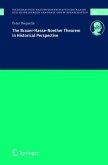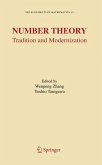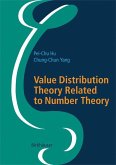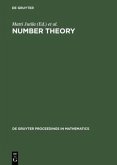Elementary Theory: Locally compact fields.- Lattices and duality over local fields.- Places of A-fields.- Adeles.- Algebraic number fields.- The theorem of Riemann-Roch.- Zeta-functions of A-fields.- Traces and norms.- Classfield Theory: Simple algebras.- Simple algebras over local fields.- Simple algebras over A-fields.- Local classfield theory.- Global classfield theory.
)tPI(}jlOV, e~oxov (10CPUljlr1.'CWV Aiux., llpop. . .dsup.. The first part of this volume is based on a course taught at Princeton University in 1961-62; at that time, an excellent set of notes was prepared by David Cantor, and it was originally my intention to make these notes available to the mathematical public with only quite minor changes. Then, among some old papers of mine, I accidentally came across a long-forgotten manuscript by Chevalley, of pre-war vintage (forgotten, that is to say, both by me and by its author) which, to my taste at least, seemed to have aged very well. It contained a brief but essentially com plete account of the main features of classfield theory, both local and global; and it soon became obvious that the usefulness of the intended volume would be greatly enhanced if I included such a treatment of this topic. It had to be expanded, in accordance with my own plans, but its outline could be preserved without much change. In fact, I have adhered to itrather closely at some critical points.
)tPI(}jlOV, e~oxov (10CPUljlr1.'CWV Aiux., llpop. . .dsup.. The first part of this volume is based on a course taught at Princeton University in 1961-62; at that time, an excellent set of notes was prepared by David Cantor, and it was originally my intention to make these notes available to the mathematical public with only quite minor changes. Then, among some old papers of mine, I accidentally came across a long-forgotten manuscript by Chevalley, of pre-war vintage (forgotten, that is to say, both by me and by its author) which, to my taste at least, seemed to have aged very well. It contained a brief but essentially com plete account of the main features of classfield theory, both local and global; and it soon became obvious that the usefulness of the intended volume would be greatly enhanced if I included such a treatment of this topic. It had to be expanded, in accordance with my own plans, but its outline could be preserved without much change. In fact, I have adhered to itrather closely at some critical points.
"L.R. Shafarevich showed me the first edition in autumn 1967 in Moscow and said that this book will be from now on the book about class field theory. In fact it is by far the most complete treatment of the main theorems of algebraic number theory, including function fields over finite constant fields, that appeared in book form. The theory is presented in a uniform way starting with topological fields and Haar measure on related groups, and it includes not only class field theory but also the theory of simple algebras over local and global fields, which serves as a foundation for class field theory. The spirit of the book is the idea that all this is asic number theory' about which elevates the edifice of the theory of automorphic forms and representations and other theories.
To develop this basic number theory on 312 pages efforts a maximum of concentration on the main features. So, there is absolutely no example which illustrates the rather abstract material and brings it nearer to the heart of the reader.
This is not a book for beginners. This book is written in the spirit of the early forties and just this makes it a valuable source of information for everyone who is working about problems related to number and function fields."
Zentralblatt MATH, 823
To develop this basic number theory on 312 pages efforts a maximum of concentration on the main features. So, there is absolutely no example which illustrates the rather abstract material and brings it nearer to the heart of the reader.
This is not a book for beginners. This book is written in the spirit of the early forties and just this makes it a valuable source of information for everyone who is working about problems related to number and function fields."
Zentralblatt MATH, 823








